Candy Chromatography
Candies come in all shapes and sizes. You might find spheres in all the colors of the rainbow or find tiny discs that are colored […]
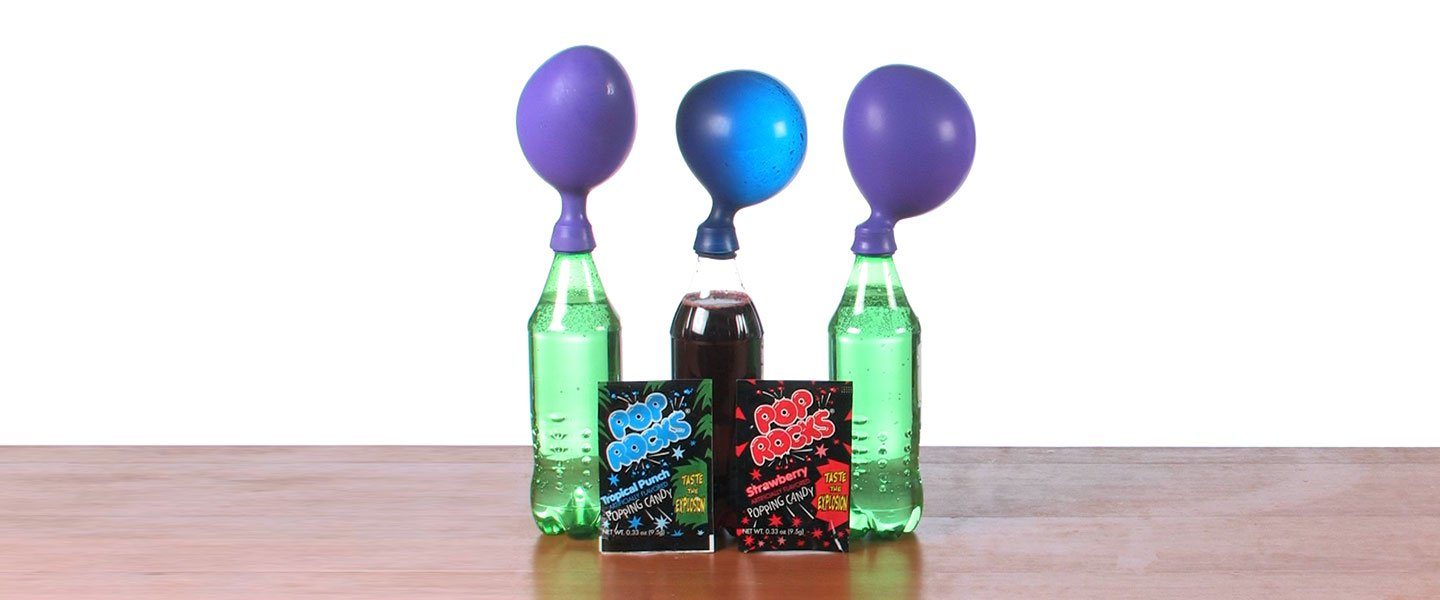
Pop Rocks is one of the greatest candy inventions of all time! You dump a few of the tiny pebbles onto your tongue and in an instant, they begin fizzing, popping, and snapping about in your mouth. What’s going on here? Being scientists, we devised a way to figure out the popping secret behind the famous candy. Get ready to expand your mind (as well as a few balloons).
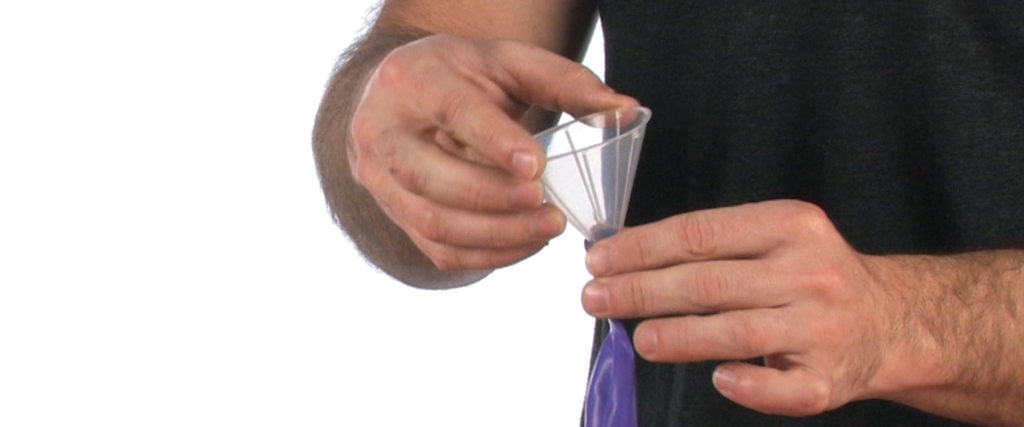
The easiest way to get an entire package of Pop Rocks into a balloon is to use a small kitchen funnel. Place the narrow end of the funnel into the mouth of the balloon.
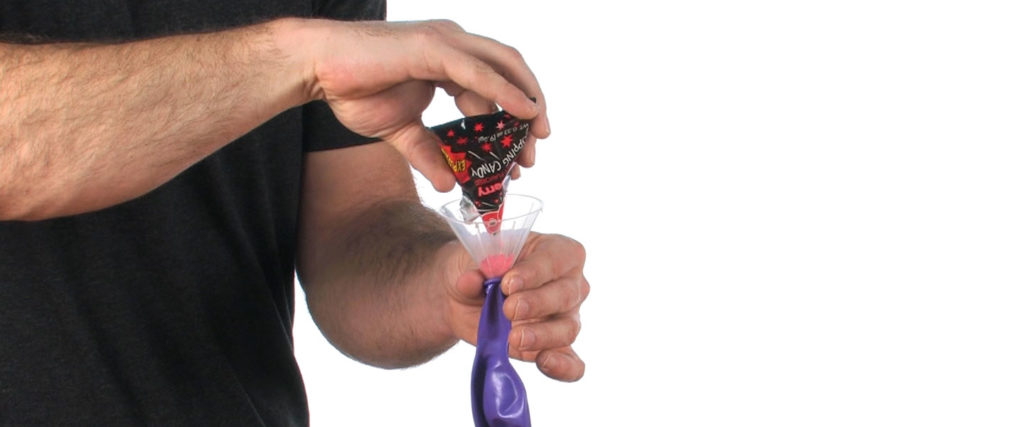
Empty the Pop Rocks packet into the funnel. Make sure the funnel is empty by giving it a few firm taps. You should be able to see into the balloon.
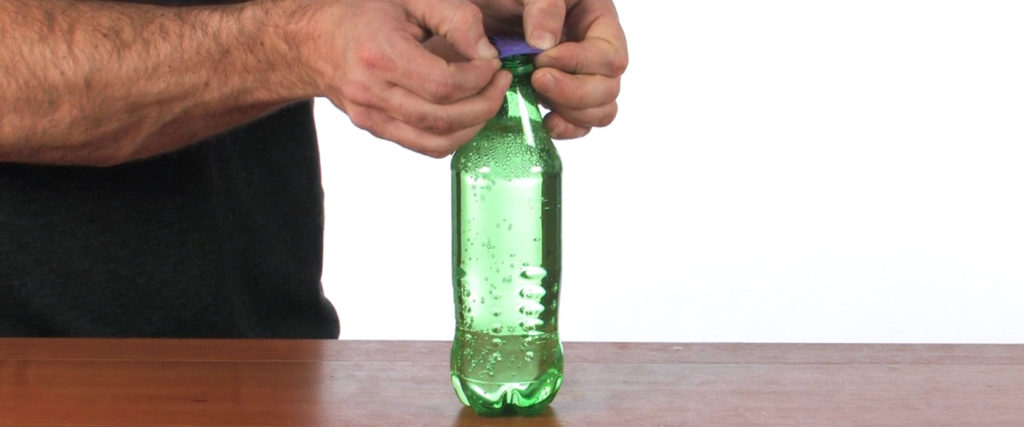
Place the opening of the balloon over the mouth of a bottle of soda. The balloon should hang down beside the bottle. Stretch the opening of the balloon over the mouth of the bottle but make sure the valuable candy content doesn’t get dumped into the soda. You don’t want to drop the candy before you’re ready.
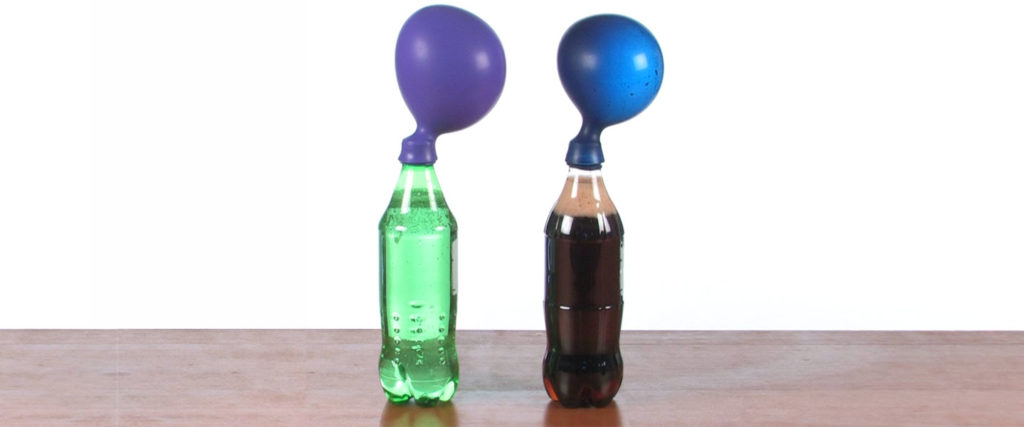
Grab the balloon at it lowest point, lift it up, and dump the Pop Rocks into the soda. Be sure to observe what’s happening inside the bottle as the liquid reacts to the candies. The balloon will be inflating even if the change is very slight.
The secret behind the famous “popping” of Pop Rocks candy is pressurized carbon dioxide gas (CO2). Each of the tiny little candy pebbles contains a small amount of the gas. When they burst free from their candy shells, these tiny gas bubbles make the popping sound you hear . Need more proof? Try finding a relatively large Pop Rock in a bag and use a spoon to crush it against a hard surface. Once you achieve enough pressure, you’re likely to hear a “pop” similar to the sound you hear when you have a Pop Rock on your tongue.
So what causes the balloon to inflate? The carbon dioxide gas held in the candy isn’t nearly enough to cause even the small amount of inflation you observed. That’s where the CO2 in the soda comes into play. The soda, a carbonated liquid to begin with, contains lots of pressurized CO2. When the Pop Rocks are dropped into the soda, some of the gas in the soda collects in gazillions of bubbles on microscopic nucleation sites (imperfections, dents, bumps) on the candy. Some of the gas escapes from the water and corn syrup that hold it and moves upward. It fills the space at the top of the bottle and then moves up into the balloon as the volume of CO2 increases.
Want to make the Pop Rocks Expander into a science fair project? That’s a fantastic idea! There are a number of different variables that you can choose to get that blue ribbon. Remember though, whatever variable you choose, you need to keep everything else the same.
Those are just a few of the possible variables you could use. You’re super creative… come up with your own!
According to information from the manufacturer, Pop Rocks Inc, the candy starts out like any other hard candy by combining sugar, lactose (milk sugar), corn syrup, and flavoring. These ingredients are heated to the boiling point and the hot sugar mixture is mixed with carbon dioxide gas under high pressure (about 600 pounds per square inch or “PSI”). The process causes tiny, high pressure bubbles of carbon dioxide gas to form in the candy.
When the hot candy mixture cools and the pressure of the gas is released, the hard candy shatters into tiny pieces of “carbonated” candy. If you look carefully at the candy with a magnifying glass, you’ll see the tiny bubbles – each containing a small amount of carbon dioxide gas under high pressure (600 PSI). When the candy melts in your mouth, the 600 PSI bubbles of gas are released with a loud popping sound. Very cool!